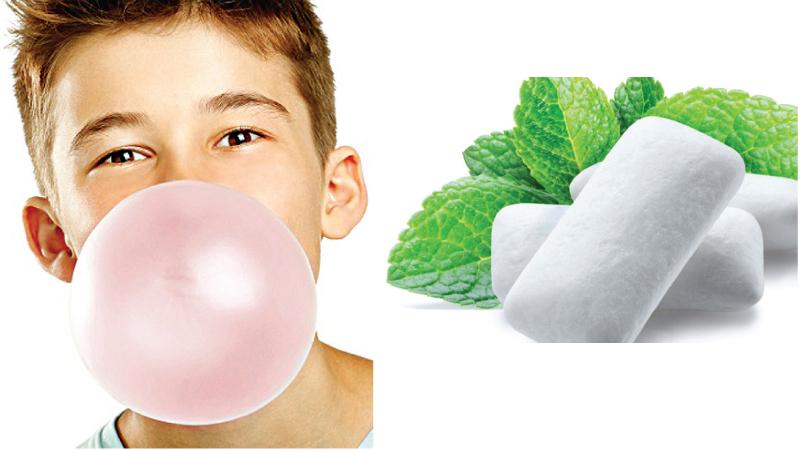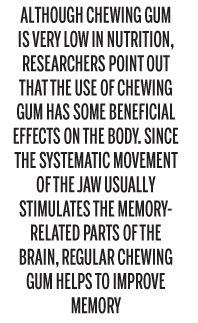
Chewing gum has become extremely popular among young and old in all parts of the world. Often, young children chew them even at school while those who are working chew them at work, in the belief that it can stave off boredom.
Simply put, one of the best ways for most of us to get rid of boredom during a lecture or assembly at present is to chew gum. However, how many among those that chew gum would know how it was created?
There is ample evidence that gum made from natural ingredients has been used by many people around the world for centuries.
 Almost all of the chewing gum prepared in this way consisted of gum derived from plants, sweet grasses, leaves and grains. For instance, the Greeks used the gum of a plant named ‘Mastic’, which is commonly found in Turkey and Greece to produce chewing gum and they believed that it also cleanses the teeth.
Almost all of the chewing gum prepared in this way consisted of gum derived from plants, sweet grasses, leaves and grains. For instance, the Greeks used the gum of a plant named ‘Mastic’, which is commonly found in Turkey and Greece to produce chewing gum and they believed that it also cleanses the teeth.
Red Indians
Meanwhile, chewing gum was introduced to the British who came to the United States (US) to establish colonies among the Red Indians that lived there.
They pointed out that to quench their thirst, it is advisable to apply a waxy resin under the bark of the spruce tree. Thus, in the early 19th century, the gum from the spruce tree in the Eastern states of the US rapidly sold, making it the first commercial chewing gum product in the US. However, by the 1850s, sweetened paraffin wax had taken the place of spruce gum.
When spruce gum was used in North America, chewing gum in Central America was a type of glue derived from the tree ‘Manilkara Zapota’, commonly known as Sapodilla Sapota, Chikoo, Chico, Naseberry or Nispero.
Milk-like gum obtained from the said tree which is often found in Mexico, Guatemala, and the Yucatan Peninsula, became popular not only in Central America but in many parts of the world in the 1860s. It has also made a significant contribution to the production of chewing gum currently in use.
Western Finland
Archaeologists at the University of Derby have unearthed a 5,000-year-old piece of chewing gum during excavations in Western Finland. Neolithic, it is made from birch bark glue, also known as birch tar, and is believed to have been used as a remedy for gum infections as well as for repairing broken pottery.
Chewing gum was first manufactured as a commercial product in 1848. That was by John Bacon Curtis. He made chewing gum using spruce gum, which was popular in the US at the time, and added paraffin to make it more flavourful and softer.
Later, on July, 27, 1869, Amos Tyler obtained a patent for the production of chewing gum, but he did not pursue commercial production. In December of the same year, William Finley obtained a patent for the manufacture of chewing gum, using charcoal and chalk as the basic raw material.
Thomas Adams is credited with starting the mass production of chewing gum. By 1870 he had built a large factory in New York City and began producing chewing gum with a variety of flavours. He had also had plans to set up vending machines at places where the people were gathering in large numbers.
Wrigley Chewing Gum
Founded in 1891 by William Wrigley Jr., Wrigley Chewing Gum is still the world’s largest chewing gum company, accounting for 35 percent of world chewing gum production. It is estimated that their net annual income from chewing gum sales is close to US $ 1 billion.
Although chewing gum is very low in nutrition, Researchers point out that the use of chewing gum has some beneficial effects on the body. Since the systematic movement of the jaw usually stimulates the memory-related parts of the brain, regular chewing gum helps to improve memory.
Chewing gum is also great for maintaining mental concentration. According to research, chewing gum also helps in facilitating the digestive process in the body, by increasing the production of oral saliva.
Chewing gum can also be used to lose weight by lowering the appetite. The contribution of chewing gum to oral hygiene is also high as the increased production of oral saliva controls tooth decay as well as gum infections.
